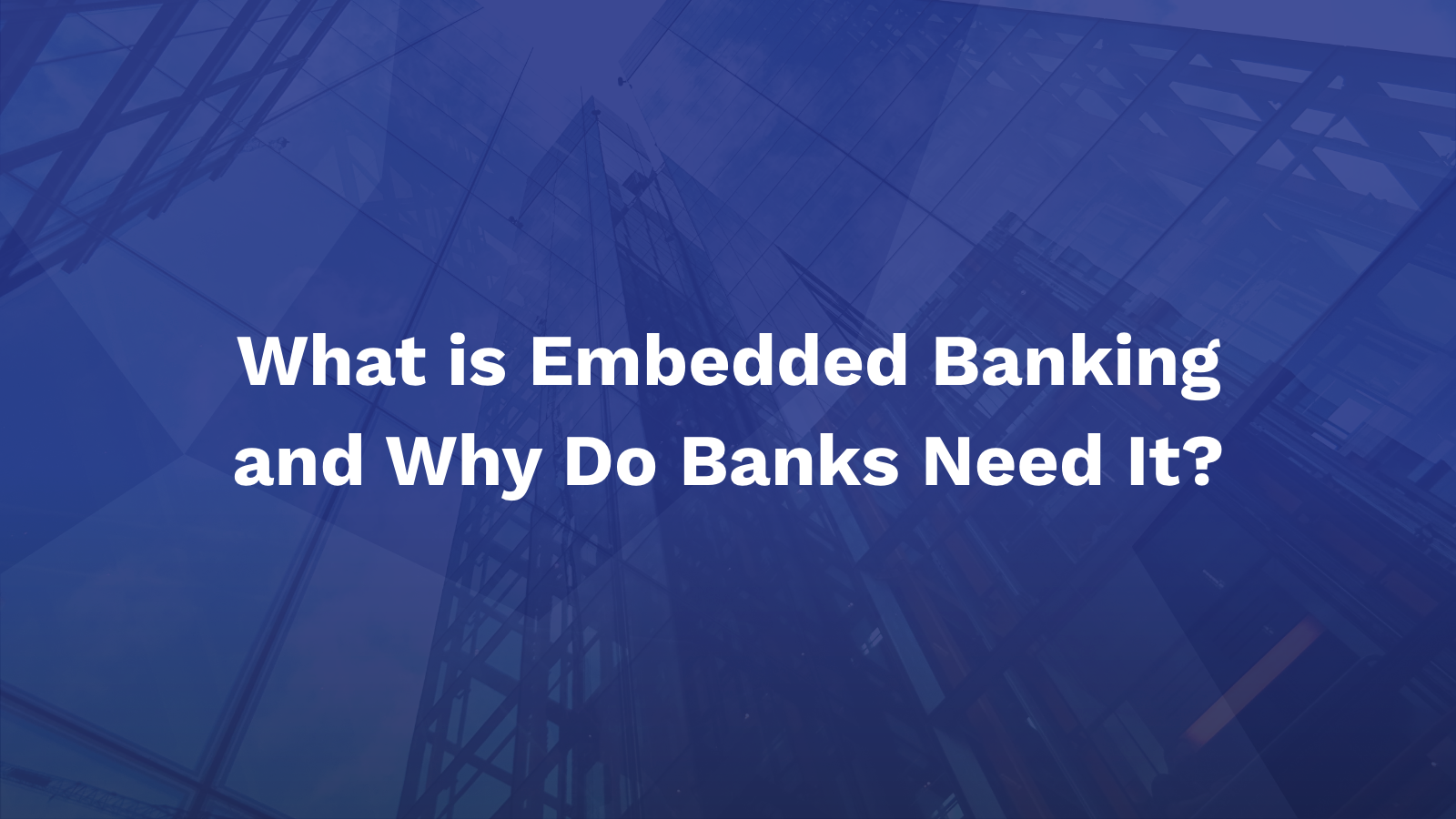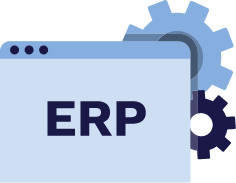
What is Embedded Banking and Why Do Banks Need It?
Banks have always strived to be where their clients live. We see that everywhere we look when it comes to consumer banking, with ATMs, online, and mobile banking. Consumer banking experiences have become easy to consume within the context of the consumer’s daily life. But, on the other side of the coin, business banking has not caught up. These expectations cross over into business banking users, and banks know this is where there is work to be done. Banks can provide these next-gen experiences to their business clients too, by providing banking products and services where they manage their day-to-day business. Namely, in their Enterprise Resource Planning (ERP) systems and accounting software.
The Problem
ERP systems enable many things for a business, including accounting, sales, supply chain management and more, but banking integration is missing. A banking integration would allow access to the bank’s products and services embedded within the ERP or accounting software. With an ERP-Bank integration, businesses will have the ability to take a bill and mark it as paid and actually have the payment sent out, see a customer deposit money into their account to pay an invoice, and then apply that money to the invoice directly. We don’t see this connection today.
Within an ERP, you can use the data to execute a payment, but then you need to log into your bank portal separately to use the bank’s data to reconcile the payment. There is no out-of-the-box interchange between the ERP systems and the bank’s products and services. The branch between those two actions is an employee whose whole job is to bridge the gap for their company. These employees use their ERP system to invoice clients, receive vendor bills, and manage different types of data. The employees then have to log into their bank portal or physically go into the bank in order to use their services to fulfill global payments, cash management, and receive loans. Their daily routine consists of cash management, accounts payables, and accounts receivables using both their ERP system and their bank. We call this the “two screen” problem.
FISPAN’s solution provides a two-way connection between the bank and the ERP, which can push data from the bank into the ERP and vice versa.
The Current ERP Market
Every company, ERP, and platform is very different, which is why each business has to evaluate themselves to find the best fit for their company size, goals, and functions. How should banks approach an ERP strategy with so many different systems available in the market? FISPAN’s research team has carried out an in-depth analysis of the ERP market so you don’t have to.
When looking at how to prioritize ERPs, it’s important to understand which systems are currently most popular, and which systems are quickly gaining market share. You must also evaluate each ERP’s portfolio strategy, do they offer one product for one market segment, or do they offer multiple products across multiple market segments? In addition, it’s important to assess the technical complexity of building an integration with that ERP.
To break down the market, we have categorized ERP vendors into four categories:
- The Big 4 - Long-term players in the ERP market boasting multiple products that cater to businesses across a wide range of sizes, industries, and geographies.
- Cloud Leaders - True cloud players with market-defining visions and strong go-to-market strategies that are best positioned for the future.
- Vertical Leaders - Dominant, industry specific ERPs with vertical-specific offerings.
- Leading Account Systems - Major players in the SMB space.

When we ask our bank partners what software their business clients are using, they respond with the Big 4 (Oracle, Sage, Microsoft, SAP), but that doesn’t give us the full picture of what specific systems their clients are working with. Sage, for example, offers various solutions for the different market segments (Sage X3 or 300 for Enterprise, Sage Intacct for Mid-Market, Sage 50 for SMB, etc). We must ask which solutions for which market segments should be prioritized.
The ERP landscape is shifting as technology solutions are moving from legacy on-premise solutions to native-cloud applications. Gartner predicts that “by 2022, 75% of all databases will be deployed or migrated to a cloud platform, with only 5% ever considered for repatriation on on-premises. By 2024, 70% of all new midsize core financial management application projects, and 35% of large and global ones, will be public cloud implementations.” Businesses are moving towards cloud solutions and we want to be focused on where the market is going, not just where it is today.
Building the right ERP partnerships is a strategic decision dependent on the variety of international clients your bank serves. In North America, the Big 4 players we mentioned are the most dominant, but as we move across the globe we see different solutions varying by location. In Europe, SAP and Sage have a larger influence and we see the emergence of different ERP solutions like Asseco Solutions. In Asia-Pacific, we see Deskera and IFS, which are not prevalent in North America. In Australia, we see MYOB, Pronto, and Xero as their dominant solutions.
Down the road, if your clients are more diversified globally, it’s important to recognize the different ERP players and where they exist.
The Solution
FISPAN manages the complexity of these ERPs and accounting software in a highly secure and automated way. Our product and partnership teams work with the technical components while understanding the needs of these business clients and how they vary per ERP. That information is then translated into FISPAN integrations, allowing the bank’s products and services to directly embed into the user’s platforms in the most secure and user-friendly way.
FISPAN’s contextual business banking platform makes it simple for banks to offer commercial banking services embedded within ERP and business applications. FISPAN enables our partner banks to provide a best-in-class commercial banking experience by removing friction and adding value to how clients operate their business.
As a bank, having an integration into your client’s ERP systems will enable you to provide them with a turnkey solution that’s quick and simple to install and provides your clients with easier access to your banking products and services.
Every business, ERP, and platform are very different and have complex systems, which is why FISPAN facilitates the relationship for the banks.
__
To learn more about the ERP ecosystem and how banks can benefit through FISPAN’s integration, check our on-demand Next Gen ERP Banking Workshop. To learn more about FISPAN and our offerings, schedule a demo here.

